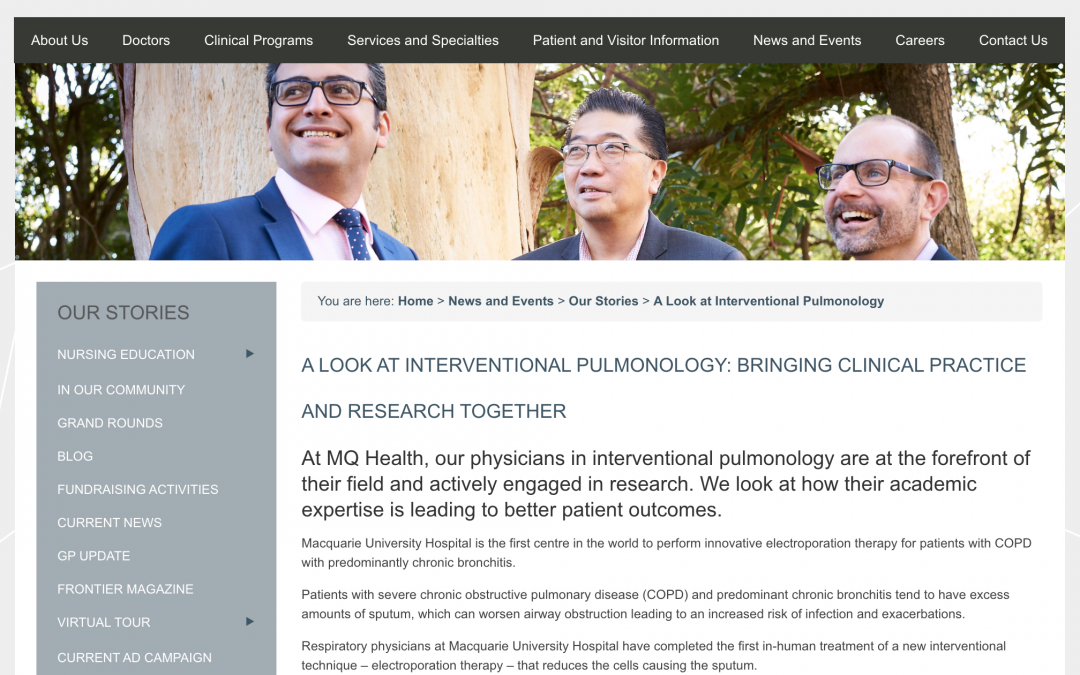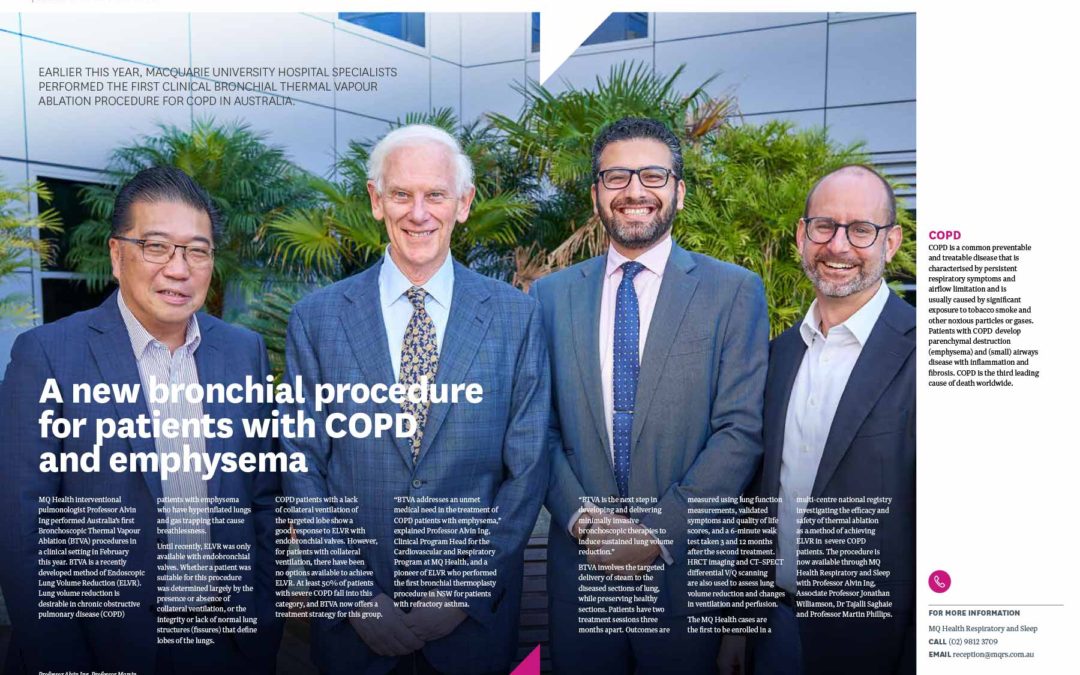Research & Teaching

81% of COVID-positive passengers on Antarctic cruise ship had no symptoms: new study

Featured Story: Doctor warns of lung cancer spike due to smoke from deadly Australian bushfires
Dr Ing said he has concerns about the long-term effects of the smoke and has seen a large rise in patients needing to increase their medication at a time in the year they would usually reduce it.

Featured Story: Australia in ‘uncharted territory’ with long-term health impacts of air pollution
One of Australia’s leading lung cancer specialists says we could see a potential spike in lung cancer in coming decades, particularly if poor air quality persists.

Featured Story: A look at Interventional Pulmonology: bringing clinical practice and research together
At MQ Health, our physicians in interventional pulmonology are at the forefront of their field and actively engaged in research. We look at how their academic expertise is leading to better patient outcomes.

A new bronchial procedure for patients with COPD and emphysema
Earlier this year, Macquarie University hospital specialists performed the first clinical bronchial thermal vapour ablation procedure for COPD in Australia.
Bronchial thermoplasty: activations predict response
Abstract Background: Bronchial thermoplasty (BT) is an emerging bronchoscopic intervention for the treatment of severe asthma. The predictive factors for clinical response to BT are unknown. We examined the relationship between the number of radiofrequency activations applied and the treatment response observed.
Methods: Data were collected from 24 consecutive cases treated at three Australian centres from June 2014 to March 2016. The baseline characteristics were collated along with the activations delivered. The primary response measure was change in the Asthma Control Questionnaire-5 (ACQ-5) score measured at 6 months post BT. The relationship between change in outcome parameters and the number of activations delivered was explored.
Results: All patients met the ERS/ATS definition for severe asthma. At 6 months post treatment, mean ACQ-5 improved from 3.3 ± 1.1 to 1.5 ± 1.1, p < 0.001. The minimal clinically significant improvement in ACQ-5 of ?0.5 was observed in 21 out of 24 patients. The only significant variable that differed between the 21 responders and the three non-responders was the number of activations delivered, with 139 ± 11 activations in the non-responders, compared to 221 ± 45 activations in the responders (p < 0.01). A significant inverse correlation was found between change in ACQ-5 score and the number of activations, r = ?0.43 (p < 0.05). Conclusions: The number of activations delivered during BT has a role in determining clinical response to treatment.
Keywords: Severe asthma, Bronchial thermoplasty, Response predictors, Activations, Technique
David Langton
Joy Sha
Alvin Ing
David Fielding
Francis Thien
Virginia Plummer
Bronchoscopic procedures for COPD
A breath of fresh air
Chronic obstructive pulmonary disease affects about 15% of the Australian population aged over 40 years and 40% of those aged over 75 years. Treatment options for advanced disease are limited, but novel bronchoscopic procedures can offer physiological benefits in carefully selected patients.
JONATHAN P. WILLIAMSON MB BS, BSc(Hons), PhD, FRACP
TAJALLI SAGHAIE MD, FRACP
ALVIN J. ING MB BS(Hons), MD, FRACP
